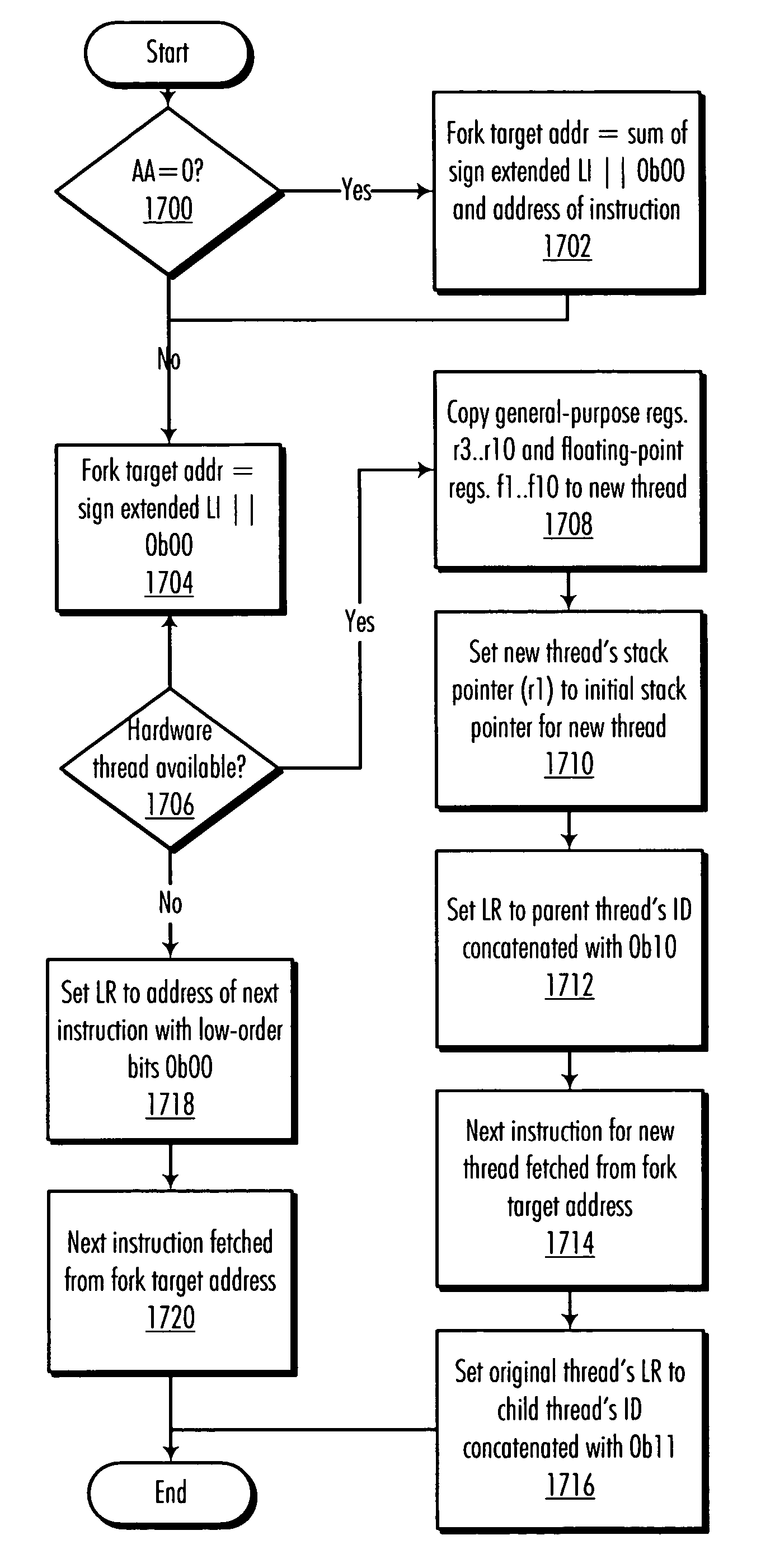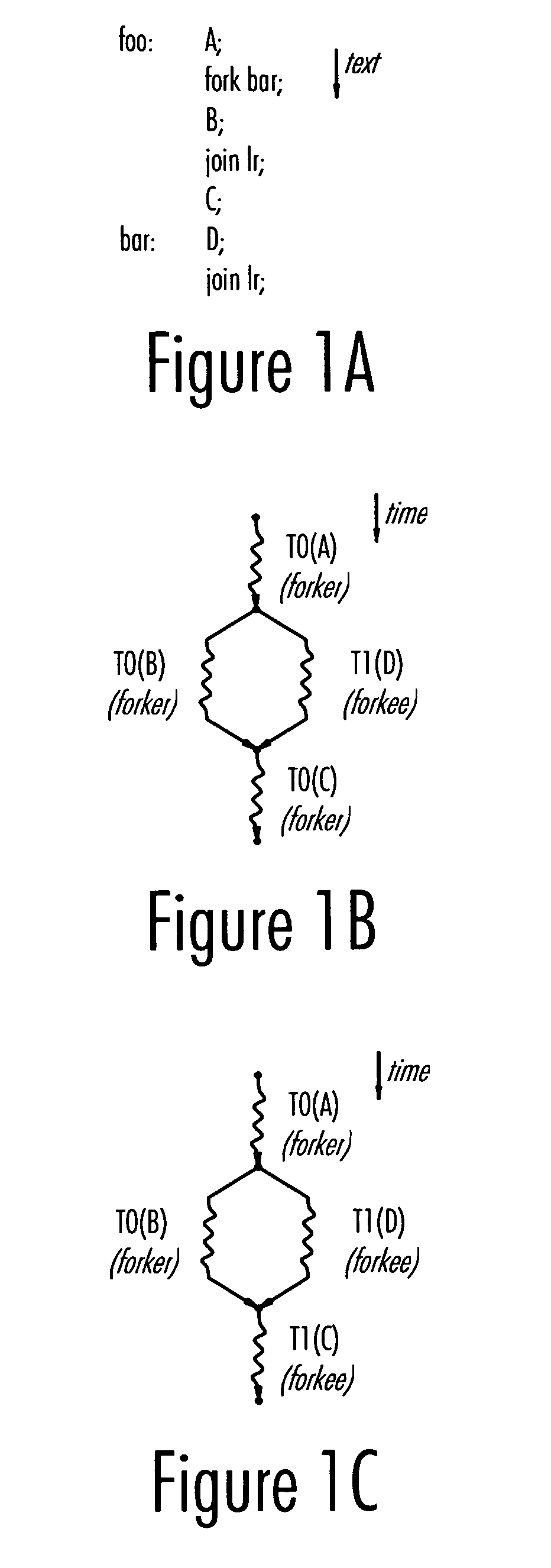Multithreaded processor architecture with implicit granularity adaptation
- Summary
- Abstract
- Description
- Claims
- Application Information
AI Technical Summary
Benefits of technology
Problems solved by technology
Method used
Image
Examples
Embodiment Construction
[0046] The following is intended to provide a detailed description of an example of the invention and should not be taken to be limiting of the invention itself. Rather, any number of variations may fall within the scope of the invention, which is defined in the claims following the description.
[0047] The present invention provides a multithreaded processor architecture that aims at simplifying the programming of concurrent activities for memory latency hiding and parallel processing without sacrificing performance. We assume that the programmer, potentially supported by a compiler, specifies concurrent activities in the program. We call each of the concurrent activities a thread.
[0048] To date, the primary focus in the design of high-performance parallel programs is thread granularity. We denote as granularity the number of instructions shepherded by a thread during execution. Coarse granularity typically implies relatively few parallel threads, which enjoy a relatively low bookk...
PUM
 Login to View More
Login to View More Abstract
Description
Claims
Application Information
 Login to View More
Login to View More - R&D
- Intellectual Property
- Life Sciences
- Materials
- Tech Scout
- Unparalleled Data Quality
- Higher Quality Content
- 60% Fewer Hallucinations
Browse by: Latest US Patents, China's latest patents, Technical Efficacy Thesaurus, Application Domain, Technology Topic, Popular Technical Reports.
© 2025 PatSnap. All rights reserved.Legal|Privacy policy|Modern Slavery Act Transparency Statement|Sitemap|About US| Contact US: help@patsnap.com



